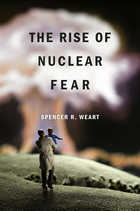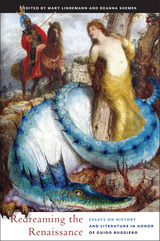
Our thinking is inhabited by images-images of sometimes curious and overwhelming power. The mushroom cloud, weird rays that can transform the flesh, the twilight world following a nuclear war, the white city of the future, the brilliant but mad scientist who plots to destroy the world-all these images and more relate to nuclear energy, but that is not their only common bond. Decades before the first atom bomb exploded, a web of symbols with surprising linkages was fully formed in the public mind. The strange kinship of these symbols can be traced back, not only to medieval symbolism, but still deeper into experiences common to all of us.
This is a disturbing book: it shows that much of what we believe about nuclear energy is not based on facts, but on a complex tangle of imagery suffused with emotions and rooted in the distant past. Nuclear Fear is the first work to explore all the symbolism attached to nuclear bombs, and to civilian nuclear energy as well, employing the powerful tools of history as well as findings from psychology, sociology, and even anthropology. The story runs from the turn of the century to the present day, following the scientists and journalists, the filmmakers and novelists, the officials and politicians of many nations who shaped the way people think about nuclear devices. The author, a historian who also holds a Ph.D. in physics, has been able to separate genuine scientific knowledge about nuclear energy and radiation from the luxuriant mythology that obscures them. In revealing the history of nuclear imagery, Weart conveys the hopeful message that once we understand how this imagery has secretly influenced history and our own thinking, we can move on to a clearer view of the choices that confront our civilization.

After a tsunami destroyed the cooling system at Japan’s Fukushima Nuclear Power Plant, triggering a meltdown, protesters around the world challenged the use of nuclear power. Germany announced it would close its plants by 2022. Although the ills of fossil fuels are better understood than ever, the threat of climate change has never aroused the same visceral dread or swift action. Spencer Weart dissects this paradox, demonstrating that a powerful web of images surrounding nuclear energy holds us captive, allowing fear, rather than facts, to drive our thinking and public policy.
Building on his classic, Nuclear Fear, Weart follows nuclear imagery from its origins in the symbolism of medieval alchemy to its appearance in film and fiction. Long before nuclear fission was discovered, fantasies of the destroyed planet, the transforming ray, and the white city of the future took root in the popular imagination. At the turn of the twentieth century when limited facts about radioactivity became known, they produced a blurred picture upon which scientists and the public projected their hopes and fears. These fears were magnified during the Cold War, when mushroom clouds no longer needed to be imagined; they appeared on the evening news. Weart examines nuclear anxiety in sources as diverse as Alain Resnais’s film Hiroshima Mon Amour, Cormac McCarthy’s novel The Road, and the television show The Simpsons.
Recognizing how much we remain in thrall to these setpieces of the imagination, Weart hopes, will help us resist manipulation from both sides of the nuclear debate.
READERS
Browse our collection.
PUBLISHERS
See BiblioVault's publisher services.
STUDENT SERVICES
Files for college accessibility offices.
UChicago Accessibility Resources
home | accessibility | search | about | contact us
BiblioVault ® 2001 - 2024
The University of Chicago Press









